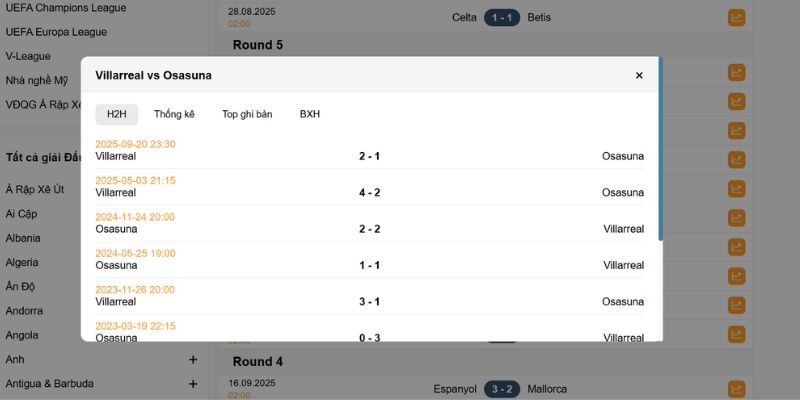Fifadata is a digital football data platform that takes the concept of Expected Goals (xG) further by building models tailored to the realities of football. Its xG models are not generic they integrate historical match data, spatial-temporal variables, and shot quality to reflect true chance value. In doing so, the website that helps fans, analysts, and coaches understand not just what happened, but how likely events were to happen.
Understanding the fundamentals of xG
Expected Goals models evaluate each shot’s likelihood of becoming a goal, based on a suite of factors. Variables such as distance to goal, angle of shot, type of assist, defensive pressure, and body part used are common inputs. Fifadata.com uses similar dimensions, but calibrates them with data from Vietnamese leagues and international matches to ensure relevance at both local and global levels.
Key variables that drive xG in practice
Distance from goal is one of the strongest predictors: shots closer to the goal generally have higher xG values than long-range attempts. The angle relative to the goal also matters, shots from central positions are more likely to succeed than ones from acute angles. In addition, whether the shot was taken under heavy defensive pressure or after a well-coordinated attack influences the probability significantly.

Key factors behind Fifadata’s accurate xG models
Historical data & calibration
To train an accurate xG model, large datasets of past shots (successful and unsuccessful) are used. Bongdaso Fifadata collects past matches in Vietnam and abroad, then calibrates with local shot patterns to improve prediction accuracy. This calibration helps avoid biases that arise when using only foreign data in local contexts.
How Fifadata builds and validates its xG models
High-quality model building involves more than selecting variables, it requires robust methodologies and rigorous validation. FIFADATA uses machine learning techniques, validation against held-out datasets, and error correction to ensure reliability. The data platform isn’t just about raw predictions; it ensures those predictions are trustworthy.
Machine learning & model architecture
Fifa data’s models leverage supervised learning algorithms such as logistic regression, gradient boosting, or ensemble methods to learn from labeled historical data. Features are engineered to include both pre-shot context (assist type, buildup speed) and situational context (player fatigue, defense density). These architectures enable this website to distinguish subtle chance differences between similar shots.
Validation and performance checks
Once models are trained, Fifadata.com holds back a portion of data (not used in training) to test predictions against real outcomes. Metrics like Brier score, calibration plots, ROC AUC, and error rates help measure how well the model’s probabilities align with actual goals. Regular re‑validation ensures that the model adapts to evolving tactics, rule changes, or shifts in playing style.

Why Fifadata’s xG models matter for fans and teams
Fans often see final scores or goal tallies, but those only tell part of the story. By using Expected Goals, Bongdaso Fifadata reveals whether a team dominated chances, suffered from finishing inefficiency, or was lucky/unyielding. This richer insight improves understanding and raises the standard for discourse.
Assessing team performance beyond goals
A team may win a match 1‑0, but they might have generated fewer or lower quality chances than the opponent; xG shows that. Conversely, a team might lose 0‑2 despite creating many high‑quality opportunities. Fifadata.com helps fans understand these nuances, so they see not just results, but performance quality.

The site updates deeper insights for fans and teams beyond the final score
Player profiling and scouting
Players are often rated by goals, assists, or visible actions, but xG allows a deeper view into their ability to create chances or take quality shots. Scouts and coaches using the website Bongdaso can spot players who consistently generate high xG even if they score less (due to bad finishing or strong goalkeeping). Such metrics are essential for discovering undervalued talent.
Integration of xG into content & narrative
Data alone isn’t enough how it’s presented makes a difference. This digital football platform in Vietnam, integrates xG outputs into match reports, visuals, and fan content to make analytics accessible. This integration helps fans, media, and commentators use xG in meaningful, engaging ways.
Visualizations and dashboards
Heat maps, shot maps, and chance trees powered by xG show who took what chances and from where. These visuals help fans “see” what statistics suggest: Did a player take many low-xG shots from distance? Was the defense exposed centrally often? These dashboards help translate data into story.
Educating fans & transparent explanations
To prevent misuse or misunderstanding of xG (e.g. treating it like certainty), Fifa data explains how probabilities work, what variables go into the model, and what its limitations are. Fans are shown how overperformance or underperformance vs xG can result from luck, finishing quality, or goalkeeper performance. This transparency builds trust.
Challenges and continuous improvement
No model is perfect; football is inherently unpredictable. Shot context can be complex, data gaps may exist, and rare events (e.g. deflections, weather conditions) may distort predictions. Fifadata acknowledges these challenges and invests in refining models to address them.
Handling rare events and outliers
When unusual events occur like shots with deflections, penalties, rebounds, they may not fit typical statistical patterns. The website’s model includes special treatment for these: marking them separately, adjusting probabilities, or using bespoke sub‑models. This helps prevent rare but impactful events from skewing overall metrics.

Website continuous model refinement to improve accuracy
Model updates & feedback loops
As more matches are played, more shot data accrues; Fifadata incorporates that data to retrain models periodically. Feedback from users (analysts, media, coaches) also highlights where the model could misjudge chance quality or context. This cycle of user input and data refinement helps maintain accuracy over time.
Impact & future directions for xG models by Fifadata
With its well‑tuned xG models, Fifadata.com is shaping how football is analysed and consumed in Vietnam. Moving forward, the platform plans to extend xG into predictive systems and interactive features. These future steps promise even more sophisticated, personalized insight.
Predictive xG & match outcome forecasts
Beyond showing “what chance was likely”, Bongdaso Fifadata aims to predict entire match outcome probabilities using aggregated xG, defensive stability, and momentum. These tools help media narratives or community predictions become more grounded and less speculative. Gurus of football prediction will find these forecasts especially valuable.
Personalized and augmented experiences
Fans may soon see xG integrated into live commentary, mobile apps, or interactive overlays where they pick a shot and see its xG in real time. Augmented reality visualizations or VR might allow fans to step into the chance analysis themselves. The digital football data that is not only analytical but immersive.
Conclusion
Fifadata’s Expected Goals (xG) models are built for football by combining historical data, machine learning, contextual variables, and localized calibration. The website data football that clarifies who played well, who was unlucky, and what matches could have looked like. This is thereby enriching viewing, analysis, and discussions for everyone interested in the beautiful game.
Fifadata – Website bongdaso – Latest football data
- Address: 22-28 Cao Ba Quat, Dien Bien, Ba Dinh, Ha Noi
- Phone:0347472334
- Email: cskhfifadata@gmail.com
Learn more from: Fifadata – Football Data Platform





